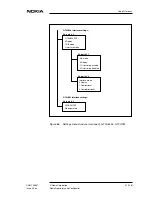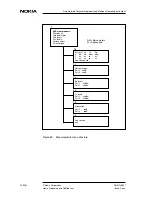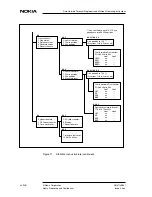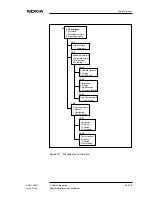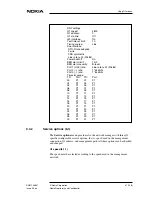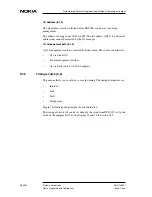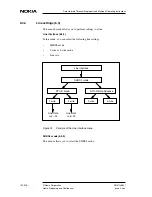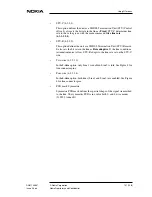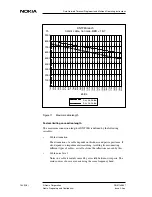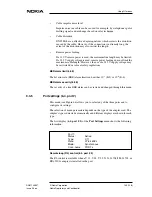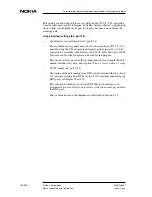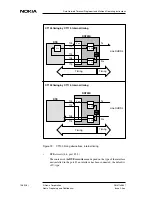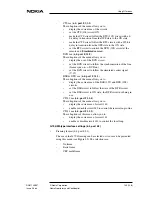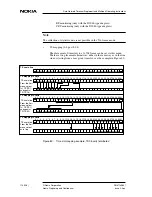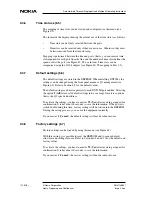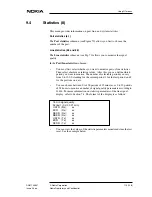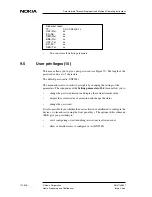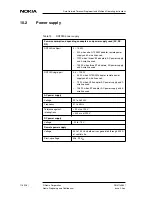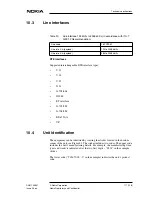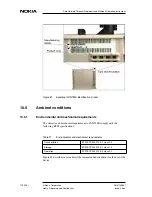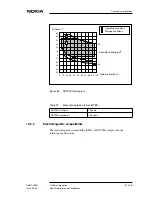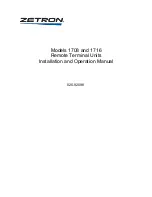
Using Q1 menus
DN01145897
© Nokia Corporation
105 (128)
Issue 2-0 en
Nokia Proprietary and Confidential
•
Cable impulse noise level
Impulse noise in a cable can be caused, for example, by a telephone's pulse
dialling signals and exchanges based on relay technique.
•
Cable distortion
DNT2Mi has an effective adapter equalizer, which corrects the distortion
caused by the cable. However, if the connection is extremely long, the
extent of the distortion may also restrict the length.
•
Remote power feeding
If a 110 V remote power is used, the maximum line length may be limited.
If a 145 V supply voltage is used, remote power feeding does not limit the
maximum cable length. However, the use of a 145 V supply voltage may
be restricted due to local safety regulations.
BER alarm limit (6,3,8)
The bit error rate (BER) alarm limit can be either 10
-3
(E-3) or 10
-6
(E-6).
BER alarm severity (6,3,9)
The severity of a line BER alarm can be viewed and changed through this menu.
9.3.5
Port settings (6,4, port #)
This menu (see Figure 64) allows you to select any of the three ports and to
configure its settings.
The selection of menu parameters depends on the type of the adapter used. The
adapter's type is detected automatically and different displays are shown for each
type.
The first display (
6,4, port #,0
) of the
Port Settings
menu shows the following
information:
Remote loop (RL) control (6,4, port #,2)
The RL control is available when a V.11, V.28, V.35, X.21, G.704/2M, G.703, or
EIA-530-A adapter is installed in the port.
Port 1:
Status:
Active
Type:
V.11
Rate:
31*64 kbit/s
Mode:
Synchronous
Conn. name:
PORT x

